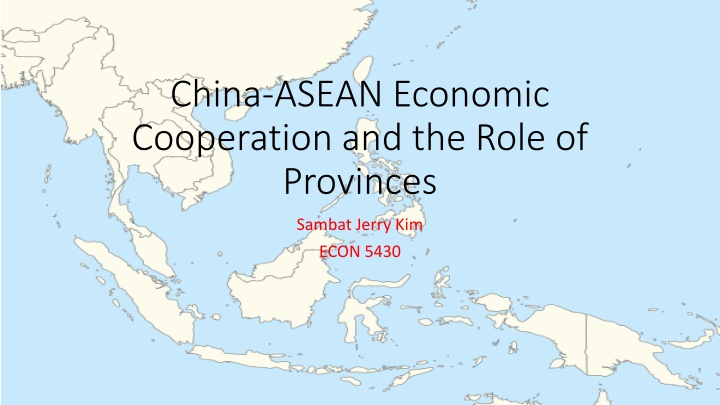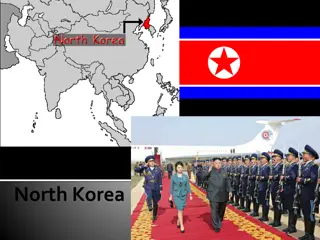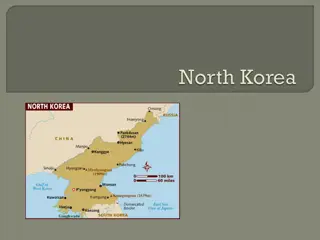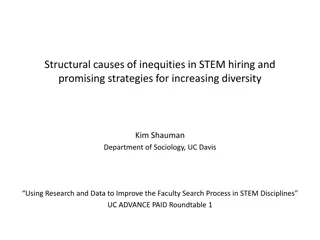
China-ASEAN Economic Cooperation: Provinces' Role and Challenges
Explore the history, purposes, and challenges of China-ASEAN economic cooperation, and learn about the role of local provinces like Guangxi. Discover how regional influence and China's foreign policy objectives shape this dynamic relationship.
Download Presentation

Please find below an Image/Link to download the presentation.
The content on the website is provided AS IS for your information and personal use only. It may not be sold, licensed, or shared on other websites without obtaining consent from the author. If you encounter any issues during the download, it is possible that the publisher has removed the file from their server.
You are allowed to download the files provided on this website for personal or commercial use, subject to the condition that they are used lawfully. All files are the property of their respective owners.
The content on the website is provided AS IS for your information and personal use only. It may not be sold, licensed, or shared on other websites without obtaining consent from the author.
E N D
Presentation Transcript
China-ASEAN Economic Cooperation and the Role of Provinces Sambat Jerry Kim ECON 5430
Introduction Association of Southeast Asian Nations (ASEAN) China Free Trade Area ASEAN Countries: Brunei, Burma, Cambodia, Indonesia, Laos, Malaysia, Philippines, Singapore, Thailand, & Vietnam.
History & Purposes HISTORY: 1950s to 1970s, Maoist China was eager to export revolution to its Southeast Asian neighbors. Deng Xiaoping launch economic reforms and opening to the external world. China would pursue an independent foreign policy emphasizing peace. PURPOSES: Road of overseas expansion Industrialization would demand for RESOURCES Controversial naval exercises in the South China Sea Most successful in developing closer ties with the regional countries
Chinas Foreign Policy Objectives While China has good relationship in the regional, USA and Japan are still major players. It generate WIN-WIN situations. Reducing US influence in the region. Supports ASEAN s leading role in the region. China also challenge the U.S. because of rapid economic growth. China s Investment in natural resources damage the environment.
Strengthening Regional Influence Involvement of local governments contributes to the reduction in costs as well as political and economic risks. Economies share their strongest complementary relationship with Yunnan & Guangxi provinces because of geographical. Japan had been the most important trade partner and source of investment for ASEAN. Now it sees China as a serious competitor.
Guangxis Positioning in Sub-regional Economic Cooperation Less developed province in China. After M Strategy in 2006, ranking was 22 among China s 31 provinces. Beijing support Guangxi in the promotion of sub-regional economic cooperation with ASEAN countries & desire for economic. Help increase trade between Guangxi and Vietnam.
Challenges in China-ASEAN Sub-regional Cooperation Reduce external pressures on China from USA and Japan seeking to contain China s Influence in the region. USA sees China as threat because the rise of economy. Japan also sees China s rise as a challenge to it leadership in Asia. China felt the pressure as its expanding naval strength.
Conclusion: Help less-developed ASEAN countries Major powers involved in the Asia-Pacific region China anticipates keen competition Attraction of foreign investment and the development Overall CHINA is important for ASEAN economies






















